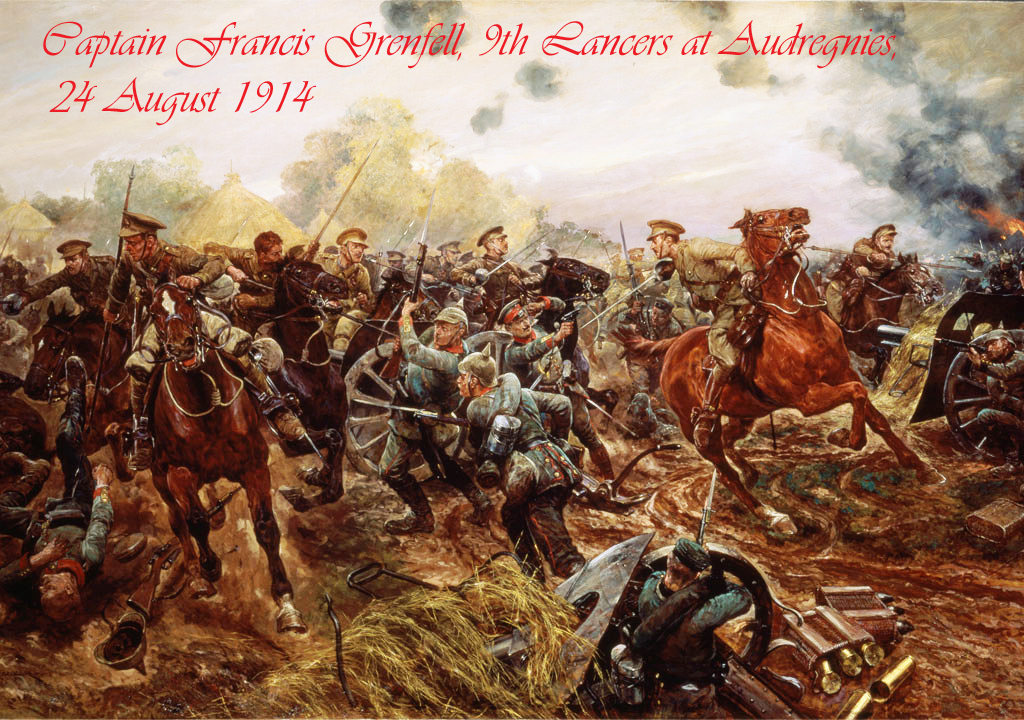A Fine & Original Chapka Plate for the 9th Royal Lancers WW1 Issue
With all battle honours up to the Boer War. The last Lancer regiment to engage in Lance on Lance combat in WW1. The chapka was a type of helmet worn by 19th century Polish light cavalry and later adopted by another nations, including Britain.
During the Second Boer War, 1899-1902, the Lancers took part in the following actions: Belmont, Battle of Modder River, Magerfonstien, Relief of Kimberley, and the following Battle of Paardeberg which resulted in Cronje?s surrender. They provided Lord Roberts? escort for his state entry into Bloemfontein. After the war, the 9th returned to Sialkot in the Punjab Although engaged in combat for the whole of the war the Lancers only operated as a cavalry unit during 1914. This was due to the widespread use of machine guns and shelling and also the advent of the tank. For the remainder of the war they operated as infantry in the trenches.
Notable events included a Victoria Cross for Captain Francis Octavius Grenfell for his actions in saving the guns of 119th Battery, Royal Field Artillery on 24 August 1914 (he was later killed in action on 24 May 1915, as was his twin brother, Riversdale, a yeomanry officer who attached to 9th Lancers), and the regiment's participation in the final "lance on lance" action of the First World War on 7 September 1914 at Moncel in which Lieutenant Colonel David Campbell led a charge of two troops of B Squadron and overthrew a squadron of the 1st Guard Dragoons. After Campbell left on promotion he was replaced as commanding officer by Desmond Beale-Browne.
.
By the end of the war 274 Lancers had died.
In August 1914 Hume's regiment was in Belgium with the British Expeditionary Force (BEF). On 24 August during the Battle of Mons, they charged a large body of German infantry who were advancing to encircle the 5th Division at Audregnies. This famous action saw Captain Francis Grenfell win the Victoria Cross. The 9th Queen's Royal Lancers, or the Delhi Spearmen, were a cavalry regiment of the British Army. They are best known for their roles in the Indian mutiny of 1857, the WW1 Charge at Mons, and for their part in the North African campaign of World War II including the retreat to and the battle of El Alamein in 1942.The 9th Queen's Royal Lancers were originally formed during the Jacobite Risings in 1715. They were formed by Major-General Owen Wynne and were the second cavalry regiment in the British Army. They were initially known as the "9th Dragoons" or "Wynne's Dragoons". In 1717, the regiment embarked for Ballinrobe, in Ireland, and was placed on the Irish establishment.
In 1783 they converted into Light Dragoons, becoming the 9th Light Dragoons, and served in the Irish Rebellion of 1798, Sir Samuel Auchmuty's expedition to the River Plate in 1803, the occupation of Montevideo and Wellington's Peninsula War between 1811 and 1813.
In 1816 they were constituted Lancers and in 1830 were given the distinguished title of "Queen's Royal", in honour of Queen Adelaide, consort of William IV, hence becoming the 9th Queen's Royal Lancers.
The Lancers were first posted to India during the Gwalior Campaign of 1843. They subsequently took part in the First Anglo-Sikh War of 1845-46 and the Second Anglo-Sikh War of 1848-49 where they were often led by Sir Hope Grant and were the first recipients of the Bronze Star Medal.
During the Indian mutiny of 1857, the 9th Lancers earned the name the Delhi Spearmen, a name which is believed to have been given to them by the mutineers themselves. 9th Lancers was present in all three of the most notable events associated with the Indian mutiny, namely, the seizure of Delhi, the seizure of Lucknow and the relief of Lucknow. For their actions the Lancers were awarded twelve Victoria Crosses, more than any other cavalry regiment. They were described by an ally as:-
"The beau ideal of all that British Cavalry ought to be in Oriental countries".
Code: 18936
295.00 GBP



